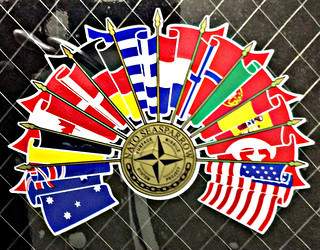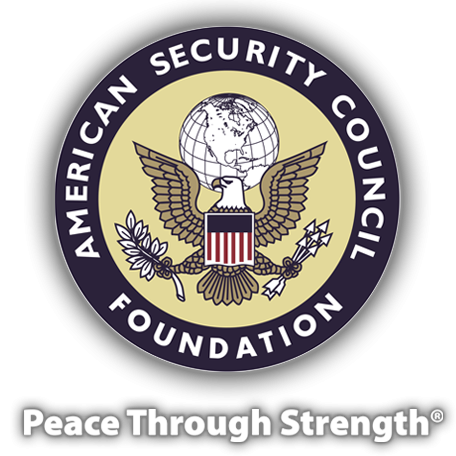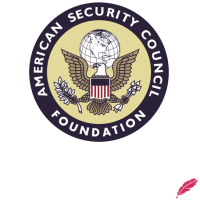A Precious Resource
Tuesday, October 3, 2023
Written by Alan W. Dowd, ASCF Senior Fellow
Categories: ASCF Articles The Dowd Report

The previous issue discussed the critical role America’s allies play in securing and defending America’s interests. In this issue, we sharpen our focus on specific areas of the world where America’s allies are sharing the security burden.
Europe
After decades of naïve neglect, our transatlantic allies are revitalizing NATO and returning NATO to its core mission of deterrence.
Twenty-seven NATO members have increased defense spending. In fact, NATO allies in Europe are increasing defense spending by 53 percent between 2021 and 2026.
Poland—Europe's new center of gravity—is devoting 4 percent of GDP to the common defense. Germany is nearly doubling defense spending. Britain is riding its largest wave of defense spending since the end of Cold War I.
NATO ground forces are forward-deployed across Poland and the Balts: Germany is permanently basing 4,000 soldiers in Lithuania and recently announced that its new naval base in Rostock will serve as NATO’s Baltic Sea headquarters. France has dispatched troops to defend Romania and Estonia. Germany, Britain, and Canada are spearheading NATO’s Baltic battlegroups to complement the growing U.S. presence in Poland.
Sweden, Norway, Finland, and Denmark combined their air fleets to build a Nordic air force comprising 250 high-end warplanes. In a similar vein, Estonia, Latvia, and Lithuania are deepening their ties to protect their shared airspace from Russian encroachment. NATO air forces are providing constant cover over Baltic airspace. Poland and the Baltic states are coordinating border security. Plus, NATO has stood up a new cyber-incident response capability.
Led by NATO, some 50 nations are sending arms and aid to Ukraine, helping defend democracy, grinding down Moscow’s war machine, and no doubt giving Beijing pause. Following the U.S., Ukraine’s top security assistance providers are Germany, Britain, Poland, Canada, France, the Czech Republic, Sweden, Estonia, and Italy. EU nations are sending Ukraine a million rounds of 155mm ammunition between spring 2023 and spring 2024.
Indo-Pacific
The transatlantic community isn’t alone in helping Ukraine defend the frontlines of freedom. Led by the G7 (the U.S., Canada, Britain, Italy, Japan, Germany, and France), almost two dozen nations have committed to providing material support to Ukraine's long-term defense, reconstruction, recovery, and security.
Indo-Pacific powers are doing their part: Australia is training Ukrainian troops and sending anti-armor systems, howitzers, ammunition, armored vehicles, and UAVs. Japan has sent drones and $5.5 billion in humanitarian aid. South Korea is shipping artillery shells to aid in Ukraine’s self-defense.
Just as Indo-Pacific nations are helping defend freedom in Europe, NATO is assisting Indo-Pacific democracies in defending their independence and sovereignty. In recent alliance summits, NATO has included Australia, Japan, South Korea, and New Zealand. NATO has identified China as a challenge, vowed to defend freedom of navigation in the Indo-Pacific, and committed to work with “partners in the Indo-Pacific to tackle cross-regional challenges and shared security interests.” This NATO+Four grouping is already bearing fruit: Japan and South Korea are participating in NATO’s Cyber Defense Center. Japan is partnering with Britain and Italy on a sixth-generation fighter bomber. Canada and Germany have steamed warships to the region for exercises with Indo-Pacific partners. Britain dispatched the aircraft carrier HMS Queen Elizabeth to the Pacific on its first deployment, and the British are permanently stationing warships in the region. France has deployed the aircraft carrier Charles de Gaulle throughout the region, joined the U.S. in enforcing freedom of navigation in the South China Sea, and sailed warships through the Taiwan Strait. For instance, France has 7,000 troops, 20 warships, and dozens of warplanes based in the Indo-Pacific.
America’s Indo-Pacific allies are understandably most concerned about threats in their region—and they are deadly serious about deterring those threats: Japan is doubling its defense outlays and will soon boast the third-largest defense budget in the world. South Korea’s defense budget has jumped 37 percent in recent years, Australia’s 47 percent.
The lynchpin of Indo-Pacific security is the U.S.-Japan alliance. Indeed, just as the island democracy of Britain was America’s bridgehead to the main theater of Cold War I, the island democracy of Japan is America’s bridgehead to the main theater of Cold War 2.0. And Japan is ready to play that vital role. Tokyo is increasing defense spending 13 percent next year, building new Aegis missile-defense warships, partnering with the U.S. to codevelop a new system to intercept hypersonic missiles, upconverting two warships into full-fledged aircraft carriers armed with F-35Bs, turning remote islands into airbases for U.S. and Japanese warplanes, beefing up defenses on its southernmost islands, and purchasing some 500 Tomahawk cruise missiles from the U.S. All these initiatives are enhancing regional deterrence—and thus serving U.S. interests.
During a historic summit at Camp David this past summer, the U.S., South Korea, and Japan leaders announced that their militaries will begin annual multidomain exercises, “which will constitute an unprecedented level of trilateral defense cooperation.” Earlier, the trio’s defense ministers announced plans to set up a system allowing the three nations to share real-time data on enemy missile launches. Maritime assets from Japan, the ROK, and the U.S. conducted missile defense exercises this past spring. And a U.S.-Japan-ROK flotilla held antisubmarine drills in late 2022.
Australia is doubling its submarine fleet; hosting U.S. Marines, F-22s, and B-52s; building a facility to service F-35s from throughout the Indo-Pacific region; and integrating closely with the U.S. and Britain under the auspices of the AUKUS alliance. AUKUS will deliver advanced hypersonic missiles, electronic warfare systems, artificial intelligence, and additional nuclear-powered submarines to protect Indo-Pacific waters. Australia and the U.S. are currently teaming up on joint weapons-production efforts and a combined intelligence-gathering center.
Key allies are signaling a willingness to help the U.S. keep Taiwan free. Australian defense officials say Canberra would support the U.S. in defending Taiwan. Japanese defense officials have declared, “The peace and stability of Taiwan are directly connected to Japan.” In a break with precedent, Tokyo appointed a sitting government official to serve as de facto defense attaché to Taiwan.
Sometimes overlooked in America’s Indo-Pacific alliance system is the strategically located nation of the Philippines. Wary of China’s actions, Manila is opening nine bases to U.S. assets, working with Washington and Tokyo to modernize its military, and training for amphibious assaults alongside Australian and U.S. forces.
Troops from Australia and Japan. Singapore, Britain, and France are now participating in annual U.S.-Indonesia military exercises.
The Quad partners (the U.S., India, Japan, and Australia) share satellite imagery and conduct large-scale naval maneuvers. This deepens cooperation on supply-chain resilience, building secure 5G networks, partnering on cybersecurity, and expanding intelligence-sharing.
Speaking of India, the world’s largest democracy is not yet in a formal alliance with the U.S., but U.S. warships are docking in Indian ports; U.S. bombers are landing at Indian bases; and the two democracies are expanding joint military exercises, with exercises focused on ground operations, air operations, special operations, and air-land-sea operations. Indeed, New Delhi is shouldering an increasing share of the security burden in the region by working with its fellow Quad partners on progressively sophisticated and integrated exercises, as well as weapons acquisition. Recent years have seen India purchase an amphibious transport ship, Reaper ground-attack drones, dozens of AH-64 attack helicopters, scores of long-range artillery batteries, and hundreds of Stinger anti-aircraft missiles—all from the U.S. India has upped defense spending by 49 percent in the past decade, boosted its defense budget 13 percent for 2024 and recently commissioned its second aircraft carrier. As with Japan’s contributions, all of this is helping deter Beijing—and serving U.S. interests.
Finally, Japan, South Korea, and Taiwan are partnering with the U.S. to forge the Chip4 Alliance to ensure a steady supply of semiconductor microchips to the Free World. Related, the Netherlands and Japan have joined the U.S. in restricting exports of semiconductor-production equipment to China.
Middle East
Israel is sending missile-warning systems to Ukraine, and Israel is sharing missile-defense systems with Germany and Finland. Of course, Israel’s primary concern is Iran. Thus, Israel is attritting Iran’s presence in Syria through an ongoing targeted air campaign that has taken out Iranian advisors and Iranian-supplied bases. In addition, Israel is sharing intelligence on Iran with the U.S. and testing missile defenses with the U.S. It pays to recall how much Israel helped the U.S. with the massive cyber operation that stunted Iran’s nuclear program.
In the ongoing war on terror, allies from the Americas, Indo-Pacific, and Europe are launching airstrikes, unleashing cyber-attacks, carrying out training missions, eliminating ISIS leaders, and conducting commando assaults against ISIS.
Seven NATO members form the backbone of an international partnership charged with keeping the region’s vital waterways open. And 20 U.S. allies form the core of the Combined Maritime Forces, which fights piracy and promotes freedom of the seas around the Arabian Peninsula.
Essential
Add up all these missions, initiatives, operations, and deployments—and it’s clear that our allies are helping us even as we help them. The American people need to recognize our system of alliances for what it is: a precious resource and an essential element of our own security.











